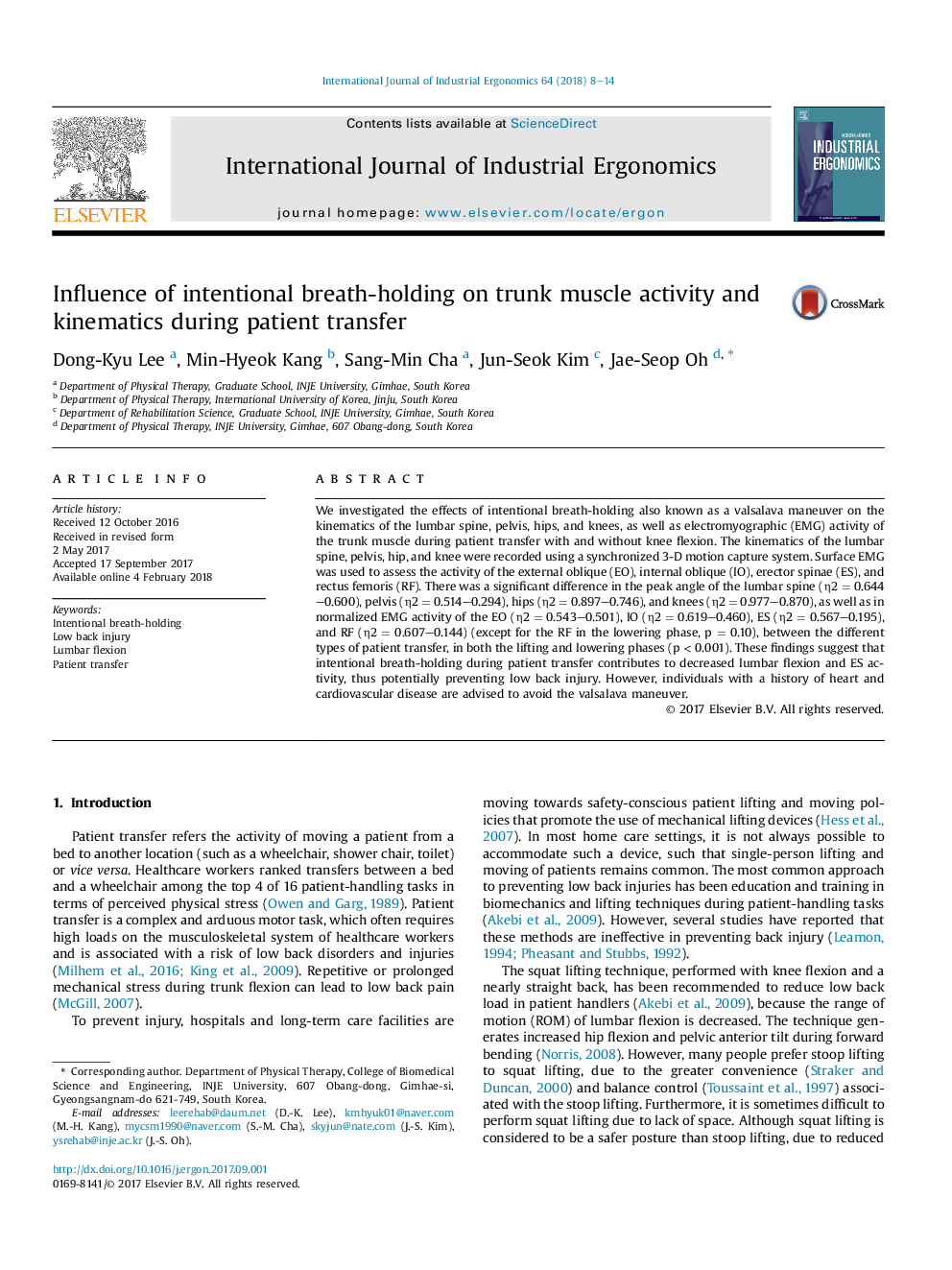| کد مقاله | کد نشریه | سال انتشار | مقاله انگلیسی | نسخه تمام متن |
|---|---|---|---|---|
| 7530425 | 1487411 | 2018 | 7 صفحه PDF | دانلود رایگان |
عنوان انگلیسی مقاله ISI
Influence of intentional breath-holding on trunk muscle activity and kinematics during patient transfer
ترجمه فارسی عنوان
تأثیر تمرین تنفس عمدی بر فعالیت عضلانی تنه و سینماتیک در طول انتقال بیمار
دانلود مقاله + سفارش ترجمه
دانلود مقاله ISI انگلیسی
رایگان برای ایرانیان
کلمات کلیدی
برگزاری نفس عمدی، آسیب کمر پشت فلکسنج کمری، انتقال بیمار،
موضوعات مرتبط
مهندسی و علوم پایه
سایر رشته های مهندسی
مهندسی صنعتی و تولید
چکیده انگلیسی
We investigated the effects of intentional breath-holding also known as a valsalava maneuver on the kinematics of the lumbar spine, pelvis, hips, and knees, as well as electromyographic (EMG) activity of the trunk muscle during patient transfer with and without knee flexion. The kinematics of the lumbar spine, pelvis, hip, and knee were recorded using a synchronized 3-D motion capture system. Surface EMG was used to assess the activity of the external oblique (EO), internal oblique (IO), erector spinae (ES), and rectus femoris (RF). There was a significant difference in the peak angle of the lumbar spine (η2 = 0.644-0.600), pelvis (η2 = 0.514-0.294), hips (η2 = 0.897-0.746), and knees (η2 = 0.977-0.870), as well as in normalized EMG activity of the EO (η2 = 0.543-0.501), IO (η2 = 0.619-0.460), ES (η2 = 0.567-0.195), and RF (η2 = 0.607-0.144) (except for the RF in the lowering phase, p = 0.10), between the different types of patient transfer, in both the lifting and lowering phases (p < 0.001). These findings suggest that intentional breath-holding during patient transfer contributes to decreased lumbar flexion and ES activity, thus potentially preventing low back injury. However, individuals with a history of heart and cardiovascular disease are advised to avoid the valsalava maneuver.
ناشر
Database: Elsevier - ScienceDirect (ساینس دایرکت)
Journal: International Journal of Industrial Ergonomics - Volume 64, March 2018, Pages 8-14
Journal: International Journal of Industrial Ergonomics - Volume 64, March 2018, Pages 8-14
نویسندگان
Dong-Kyu Lee, Min-Hyeok Kang, Sang-Min Cha, Jun-Seok Kim, Jae-Seop Oh,
